by Robert E. Hunter
Less than a month from now, September 4-5, the 28 NATO allies will hold a summit in Wales. It was originally figured to be a “ho-hum” meeting, focusing on the end of the Alliance’s decade-long military campaign in Afghanistan and plans for “adapting” NATO for an uncertain future of potential engagements “outside of area” — to use the technical term for any place beyond Europe.
Russian President Vladimir Putin, aided and abetted by a lengthy period of instability, incompetence, and corruption by various Ukrainian governments, has changed the agenda. Now the allies need to come up with a plan for dealing not just with Putin’s peremptory seizure of Crimea but also with continuing military clashes between Russian-speakers in southeast Ukraine, who wish to be united with Mother Russia, and forces of the Ukrainian central government in Kiev. There is even speculation in various parts of the West that, in order to save loyalists from defeat by Ukraine, Putin will intervene directly with military force. Unlikely? Yes. Impossible? No.
The Ukrainian crisis was sidelined in media focus everywhere but in Central Europe until the accidental — other than an act of sheer insanity, that’s what it was — shooting down of Malaysian Airlines flight MH17 on July 17, which took 298 lives. Almost certainly, however, the weapon used was a high-altitude anti-aircraft system supplied to Russian rebels in Ukraine by authorities in Moscow. At that point, it became impossible for Western leaders, especially in Washington, to hope that the Ukraine crisis could be easily de-escalated. That includes diplomacy to see whether it could be possible, in time, to return to the vision that President George H.W. Bush had of trying to create a “Europe whole and fee,” which he believed (correctly) had to include Russia in some way acceptable to all.
Throughout this rolling crisis, the question for the West, especially the United States (as “leader of the West”), and for NATO has been, in the Russian phrase popularized by Lenin, Shto Delat’? (??? ???????) –“What is to be done?”
This has not been an easy question to answer, for a number of reasons.
Countering Russia
In the first place, there has been a general willingness by Western governments, except those closest to Ukraine and Russia, to separate “Crimea” from the rest of “Ukraine.” The former was for two centuries part of Russia, with a population that is almost entirely Russian (Stalin having expelled the native Crimean Tatars in 1944), until given as a birthday present to Ukraine by Nikita Khrushchev (himself a Ukrainian) in 1954. But so what? It was still part of the Soviet Union.
Putin clearly violated agreements signed by Russia, notably the 1975 Helsinki Final Act (signed by Russia’s legal predecessor, the Soviet Union) and the 1994 Budapest Memorandum, under which Ukraine relinquished nuclear weapons left on its territory when the Soviet Union collapsed, in exchange for security guarantees by the US, UK, and Russia. Nevertheless, it was convenient for most Western governments to view the seizure of Crimea as a “one-off” or “correction” of boundaries that should never have put Russians in Ukraine.
What has caught universal attention among Western governments is the campaign by Russian nationalists to dominate southeast Ukraine and, presumably, to detach it, probably with the objective of joining Russia. The Budapest Memorandum does commit the US and UK to refer any violation to the United Nations Security Council, but that is a standard weak-kneed diplomatic formulation. Something more had to be done, if only to keep from setting a precedent that borders in Europe can be changed by force and, in the process, giving aid and comfort to other states — not just those with significant Russian populations — to seek extra-legal territorial redress.
But the “something” to be done by the West cannot, by common agreement, include direct military action. Most importantly, in the local region itself, Russian military forces would have a clear advantage over anything that NATO or any member thereof could bring to bear. And what is happening in Ukraine would not justify the invocation of the US trump card, escalation to nuclear confrontation. Among other things, such an escalation of threats would not be credible to Moscow.
What the West has done is begin the process of providing Ukraine with some limited military support, while relying on the government in Kiev to begin, under its newly elected government, to take steps to recognize that the Russian-speaking minority should have some form of autonomy or role in a federal system. Under US leadership, NATO has also begun beefing up the symbols of military reassurance to other countries in Central Europe, those like the three Baltic states that are formal members of NATO and are thus subject to its political-security guarantees in the case of their being subjected to external aggression.
The phrase “symbols of military reassurance” is used advisedly, because whatever is done to show that the NATO guarantees are real would not in fact be sufficient to prevent Russian military action, if Putin were either stupid or reckless enough to take such action. (And if Putin were either so stupid or reckless, the world of European security and even much more would be changed fundamentally, leading to another “long, twilight struggle,” to quote President John F. Kennedy on the Cold War.).
These can be called prophylactic measures, and they will be buttressed and emphasized at the NATO summit in Wales. The Alliance can do no less, and many things are already being done, including training, exercises, supply of equipment, defensive air patrolling, and the prospective periodic moving of US forces back to Europe for brief periods (given that only the United States, within the Alliance, has any capacity to deal effectively with Russia. In order to guarantee this US role, after all, was the reason that the NATO allies sent troops to far-off Afghanistan).
These are negative steps, in the sense that they are designed to show Putin that by taking further military actions — possibly even within Ukraine, though it has no formal NATO commitment — would be a major raising of the stakes and that there would be “consequences” that would not be to Putin’s liking. Unless he is willing to have Russia become a pariah in the West for the foreseeable future, he will take this general notion of “consequences” most seriously. This is, after all, not 1923, when Lenin could accept the economic and political isolation of the Soviet Union from the outside world. Even though Russia is not yet a major player in the global economy, it is already tightly and, one is tempted to say, irrevocably tied to it.
Sanctions
This proposition has led the US, and now its European allies (including, formally, the European Union) to impose what are called “targeted” economic sanctions against Russia. This was not easy to achieve, especially because of uncertainties on the part of some European countries that are not directly affected — so they believe — by Putin’s actions. There is a clear division across the continent between what former Secretary of Defense Donald Rumsfeld once called “old” and “new” Europe, its western and its eastern parts. The exception has been Britain, which has chosen to emphasize its special relationship with Washington, a decision not disconnected from the continuing debate about British membership in the EU. There is also the heavy dependence of much of Western Europe on Russian hydrocarbons, reflecting two decades of foolishness in not diversifying sources of supply, and which will now take many years to do.
Sanctions, however, are tools that almost never work in the short-term and usually only against weak economies. Indeed, hoped-for political pressures on Russia (Putin) to change course will, if at all, be some time in coming and will depend on a passing of the current popularity among most Russians of what Putin is doing, as their standard of living is affected. This is a product, in major part, both of the retained sense of Russian humiliation in losing the Cold War and also in being taken advantage of by many Western countries, and especially by the United States — actions that Washington chooses to “misremember” — since about the second half of the Clinton administration through the onset of the current Ukraine crisis.
Putin is also now trying to show that sanctions are a double-edged sword, by beginning to impose restrictions on the import of Western agricultural products. Ironically, if implemented, these could hit the EU countries (about $15 billion in exports a year) much harder than the US (about $1 billion), which pressed for these actions.
Of course, this is also a “triple-edged sword” if one can imagine such a thing, in that restrictions on Western imports will have an impact on Russian consumers and thus, presumably, over time on their support for Putin.
Sizing Up Russia
This crisis very likely has a long way to go before it is over, even if Ukrainian forces do prevail over the Russian separatists and Putin decides not to intervene militarily.
In the process, a number of other factors need to be considered as the US and its allies and partners decide what to do next.
First, Russia is a big country. The importance of that trite statement is that Russia is contiguous to virtually all of the territories in the Northeastern “quadrisphere” that matter to the US and many of its allies, and extends from Europe through the Middle East and South Asia, to the Far East, and even the Artic. It is not possible to separate out from one another the different areas of interaction with Russia — where the US is more universally engaged than any West European countries..
Thus Putin is already seeking to exploit the penchant of many people in Washington to see China as a looming threat by trying to work more closely with Beijing. Not being fools, the Chinese will exact high prices for responding, and have already been doing so; they have an interest in at least exploring the possibilities in closer ties to Moscow.
The US also had a continuing interest in retaining Russian support in Afghanistan as NATO’s presence there winds down and, more importantly, in containing Iran. Moscow does share an interest in keeping Iran from getting nuclear weapons, but it has never taken this problem as seriously as do the United States and Israel. While Iran would be foolish to back-off on current negotiations with the so-called P5+1 because of the US-Russian mini-confrontation, Russia is already beginning to leave the fold when it comes to the broader interest of both Israel and Persian Gulf Arab states to keep Iran from rejoining the international community.
The US also wants Russia’s help with North Korea, Syria, and Iraq. Moscow does not necessarily have interests in helping the United States in any of these places: and if it is being sanctioned, it would be peculiar to expect it to do so, unless it does have a compelling interest. All these elements of the US-Russian relationship must be factored into the whole. Relationships do not work piecemeal. Unfortunately, the US government is not structured to see apples and oranges together, to make tradeoffs that are required between greater and lesser objectives.
Thus perhaps strategists in the Obama administration have weighed the trade-offs; perhaps not.
A final point that the West and especially the United States need to bear in mind is that a confrontation, the stigmatizing of a country as the “enemy,” is easy to get going but even more difficult to stop, without the abject surrender of the offending party. Of course, Putin also had to bear this problem in mind. Already, the psychological apparatus of the old Cold War is being trundled out in Washington and in much of the think-tank and media communities. This is coupled with the traditional US problem of having difficulty in talking the game of realpolitik, as opposed to sometimes practicing it. As a culture, Americans have difficulty in foreign affairs in dealing with uncertainties. While exaggerated, the notion of dividing the world into “friends” versus “foes” — for example, as reflected in President George W. Bush’s remark after 9/11: “Either you are with us, or you are with the terrorists” — is buried deeply within American culture.
At the end of the day, it is Putin who, through his actions, undertaken for whatever motive, most has the tiger by the tail. If there is a final accounting of winners and losers from this crisis, he will be included in the latter category. But that can be a long and difficult time for us all. The first requirement is for us to see the global picture of relations with Russia in its entirety, and to judge whatever we elect to do next in full awareness of the potential consequences and the total corpus of Western-Russian relations.
This should be Task Number One between now and the NATO summit, with its requirement that “something” be seen to be done, an expectation both of Central European states and the media, including demonstration of what everyone in the West wants: US leadership. Getting that right in the next few weeks is a tall order.

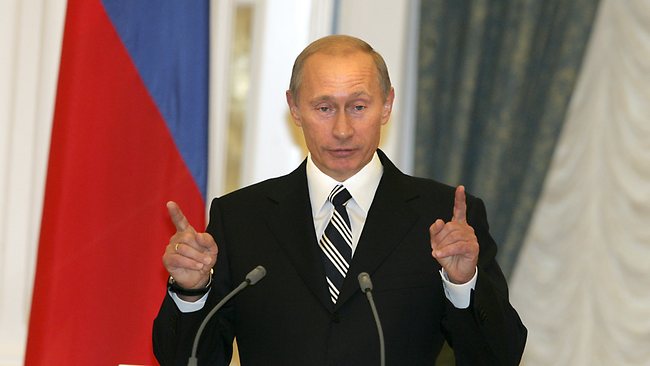
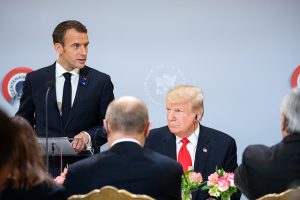
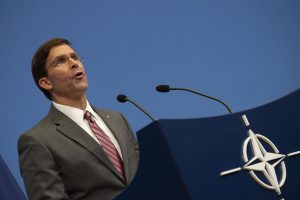
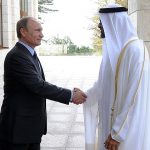
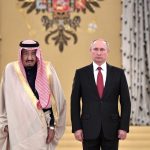
Out of the woodwork, they keep coming. Keep telling the same story over & over, then it becomes a reality, at least in some peoples minds, while in others, it questions the sanity of those repeating it. When only one side is given, and just what has the U.S. taxpayer gotten in return for all war actions? Deeper in debt, with no end in sight. Past time to implement a war tax, instead of giving tax breaks/cuts. Do business and profit in the U.S., then you pay for the Military to play. No mind bender here, but it just might curtail this unlimited mindset that the U.S. can do anything it desires as far as the rest of the world is concerned.
Sound assessment. I continue to think Putin can make a deal that will allow Russia to keep Crimea and ensure Ukraine does not become a member of Nato in the foreseeable future. No need to promote civil war.
In our minds, we think we are being supportive of Ukraine’s independence through sanctions against Russia and lofty rhetoric, but in the minds of the Urkainians, it certainly sounds like the US has put its umbrella over Ukraine, and the Russians better stay out. Sounds like Hungary in 1956 and Czechoslovakia in 1967. The existence of a hostile Ukraine on Russia’s border is not sustainable. The President of Ukraine should go to Moscow and kiss Poutin’s ring. We need to change our body language.
All bets were off the moment the US engineered a violent coup last February. Putin had every right to ignore those treaties.
We all know about how the US spent $5 billion in Ukraine promoting what it calls “civil society” to pry Ukraine out of the Russian orbit. Now there are new reports that EU banks were paying Maidan demonstrators last winter to show up.
It’s nothing new. Since the fall of the Berlin Wall, the US has been working diligently behind the scenes to reduce Russian influence in Central Asia. For years private groups like the Jamestown Foundation have been encouraging militant Islamic independent movements in the region. Some of these groups have resorted to terrorist bombing campaigns in Russian cities.
In fact, one of the Boston Marathon bombers found his way to one of these Jamestown seminars. Obviously he didn’t get the memo about terrorist activities being restricted to Russia. The empire cannot permit violence on its own streets what it promotes in the hinterlands.
“Almost certainly, however, the weapon used was a high-altitude anti-aircraft system supplied to Russian rebels in Ukraine by authorities in Moscow. ”
Some people repeat their beliefs as facts On July 29 CBC (Canadian Broadcasting Corporation) aired interview with Michael Bociurkiw, one of the first Organisation for Security and Cooperation in Europe (OSCE) investigators to arrive at the scene of the disaster, near Donetsk. He was one of the first outsiders to reach the site of wreckage of doomed flight MH17 He said:
“There have been two or three pieces of fuselage that have been really pockmarked with what almost looks like machine gun fire; very, very strong machine gun fire”.
That is something which disprove the belief that MH 17 was downed by Ukrainian rebels and we can say: Almost certainly the MH17 was shot out of the sky by Ukrainian government by one of two Ukrainian Frogfoots (SU-25) airplanes which according to some reports shadowed MH17. It would be also consistent with the fact that MH17 was diverted on its fateful day by Ukrainian air control from its usual flight path over Azov Sea